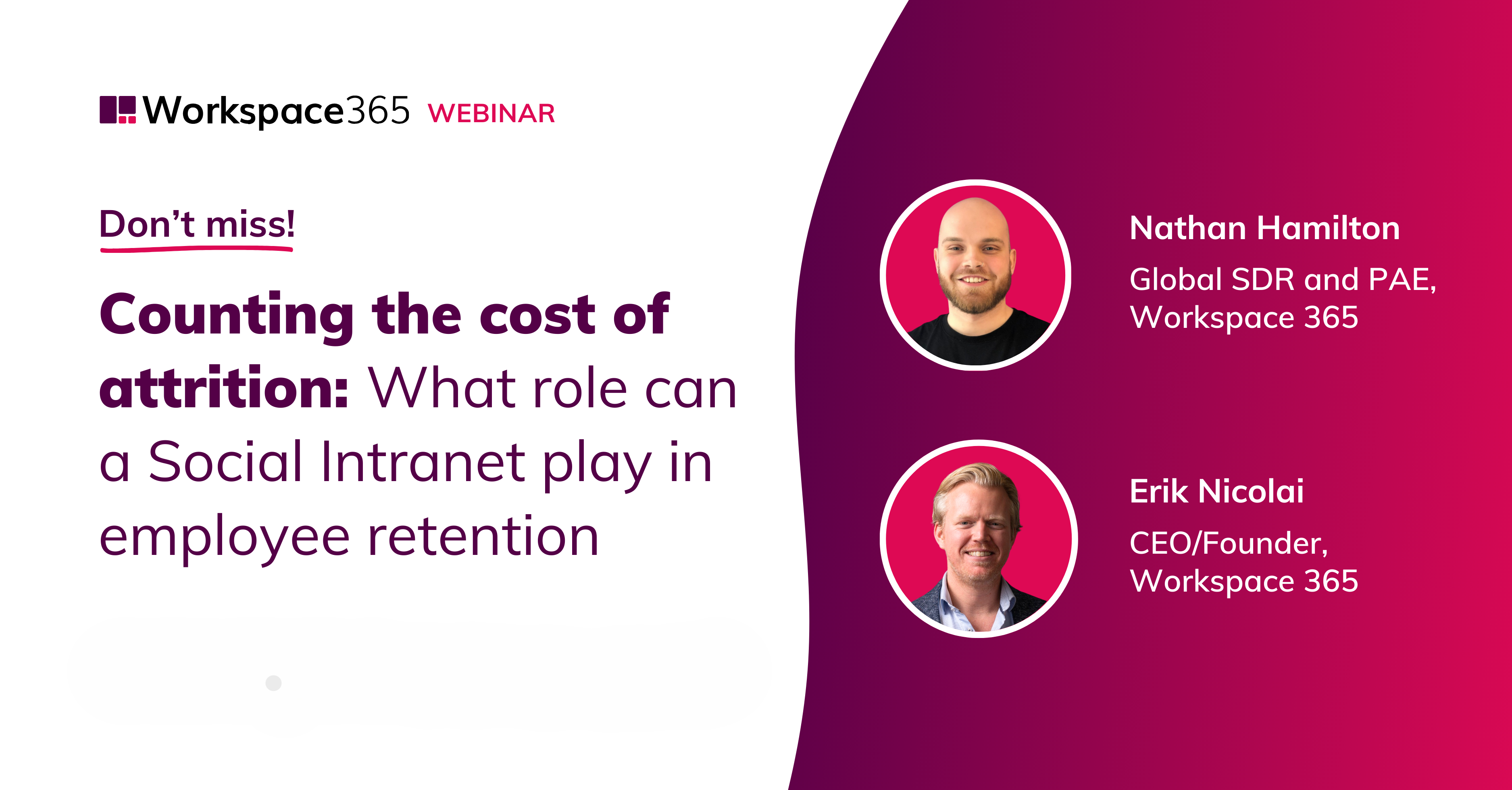However good the technology is that you implement, you might as well throw it in the bin if your employees don’t embrace it. It is their digital agility that will largely determine the success of your digital initiatives, and thus of your digital transformation. But what exactly is digital agility? Why should you invest in it? And what can you do to improve it?
Digital transformation through agility
The importance of digital agility has been underlined by the corona crisis. Companies introduced new digital tools for remote collaboration on a massive scale. However, the way they were used left a lot to be desired in most organisations, especially at the beginning. Digitally agile organisations were able to transform quickly by introducing new ways of working and adapting their services based on the new situation.
Today, it is easier than ever to implement new technology. Software-as-a-Service (SaaS) tools are almost plug-and-play and often integrate with other applications through just a few clicks. However, the biggest challenge doesn’t usually lie in the technology, but in its adoption, i.e. accepting and mastering the new product. The digital agility of your employees plays a key role in this.
What is digital agility?
The term ‘digital agility’ was introduced by leading research and consultancy firm Gartner and is used to define a certain quality that employees do or do not have, but which will determine the digital success of your organisation. Digital agility is not so much about having digital skills or digital literacy, but more about mix of attitudes and behavior that enables your digital initiatives to achieve better results in a shorter time.
Digitally agile employees are curious about the technological potential of the organisation. They show a willingness to take certain risks, want to embrace iterative and collaborative ways of working and are handy with technology and data.
According to Gartner, digital agility demands the following skills:
- business insight;
- adaptability;
- diplomacy;
- the ability to collaborate easily with people with different perspectives and experiences to your own;
- ‘system thinking’ i.e. understanding the internal and external relationships between technologies and processes.
Based on a major global survey, the research firm discovered that only 9% of employees can really be called ‘digitally savvy’. The reason this number is so low is mainly because it involves a unique combination of skills and ambition. And it is precisely this ambition to work digitally and build a digital business that is so important, indicating as it does that employees want to innovate, dare to take risks and are willing to learn new skills.
Digital agility ≠ digital experience
Digital agility, digital skills, digital literacy, digital employee experience: don’t these terms all refer to the same thing? Not at all. While the last three revolve largely around a person’s technological knowledge, skills and experience, digital agility is above all about someone’s attitude and behaviour; there is also a strong correlation between the two. After all, someone who is unwilling to embrace new technology will also have little knowledge, few skills and not much experience in technology.
Why should you invest in a digitally agile workforce?
Quite simply it comes down to the survival of the digitally fittest. When it comes to keeping an edge over the competition, digital transformation is essential, and you can’t achieve a digital transformation without digital agility. As we said before: you can invest capital in new technology, but if employees don’t do anything with it, you won’t move forward.
Gartner points out that the 9% of digitally agile employees are more or less personally responsible for the success of digital initiatives. They devise the projects, drive them, adapt their working methods, use the technology first and ultimately deliver the most value. If your staff is the truck that propels your organisation, digitally agile employees are its engine.
And what do we find? Digitally agile employees use technology as a tool to gain competitive advantage. They always look for solutions that help the organisation to innovate and to put the customer first.
Digitally agile organisations are alert to emerging technologies; they are flexible and ready to change their strategy fast. They are also able to achieve excellent business results in a rapidly changing market by using new technologies in a smart way. Organisations that lack digital agility often struggle with legacy systems and old ways of working, which means they are more concerned with keeping up than looking ahead.
Ways to improve digital agility
There are various ways to improve the digital agility of your organisation and so get a better return from (new) technology.
1. Start doing research
To measure is to know, to ask is to succeed. Therefore, start by taking questionnaires and setting up a focus group. What are the factors that keep employees from embracing new technology? What are they waiting for? What went wrong in the past and how could you fix those issues in the future? These are ways to find out what keeps your employees busy, what their concerns are and what solutions work best for them.
2. Integrate it into your business
Instead of hoping that your employees will become digitally agile themselves, you can also promote it as an essential part of your business. You could for example include KPIs related to the performance of digital initiatives, support technology pilots for business teams and free up time for your employees to spend following on-the-job, technology-related training.
3. Personal goals and bonus criteria
You can encourage people to further develop their digital agility through setting personal goals and bonus criteria, which could be based on the progress of (new) digital initiatives for example, or on the results they deliver. And bonuses don’t have to be financial, they could take the form of fun team outings.
4. Draw up a vision for the future
In a company-wide vision, you can visualise the future you dream of for your (digital) workspace. Why does it help to be the visionary and sketch all kinds of vistas? Well, because it turns out that people are more willing to accept new technology if they understand why it’s necessary when it comes to moving the organisation forward.
5. Communication and leadership
Communication from management about the importance of digital initiatives and digital agility is crucial. To get your message across, it is advisable to construct a storyline that emphasises how important digital agility is and explains why the organisation strives for it and how it hopes to achieve it. You can explain the usefulness of a new application or tool through various channels, such as e-mail, intranet or a launch party. It is also essential that leaders lead by example.
6. Adoption program
Investing in new tools to work smarter? Your productivity will only increase of course when people actually start using the tools. You can go ahead and implement Microsoft 365, but there will always be employees who will still share files via email attachments, and continue to use multiple versions of documents. The solution is an adoption program that focuses on a culture shift and in which users are trained in the new technology. It is also important to sketch the bigger picture – why is the new tool necessary? How does it improve collaboration? Help the customer? Increase the efficiency of business processes? When people are convinced of how useful a tool is, they will feel less resistance to using it.
7. Technical support
So you’ve persuaded your employees to use the new technology. That’s great, but it’s crucial that they don’t stop using it because they can’t find a particular function, or have forgotten what exactly can be done with the tool. So make sure you have sufficient technical support; this could be from a helpdesk, but also through online documentation such as PDFs or explanatory videos.
Remove technological barriers with Workspace 365
It should be clear by now: digitally agile employees are an important pillar of any future-proof organisation. However, to increase adoption, it is just as important to lower any technological barriers. The rule of thumb is that technology should always be kept as simple as possible.
And this is the philosophy behind Workspace 365, which simplifies complex systems by unifying all applications, communication and information in one adaptive workspace that is available from any device and adapts to both the environment and the people using it.
Workspace 365 also gives you tools to increase your employees’ digital agility. Consider for example a How-to-tile in the interface with videos that explain the different parts of the workspace and other integration options for videos and iFrames.
Workspace 365 removes technological barriers; people don’t have to keep adapting all the time, instead they only need to master the one platform. We offer adoption programs that boost employee’s use of the platform, and we provide adoption training for the companies that use it.
Because we make technology simple and engaging, we increase people’s willingness to use technology in general, and so we indirectly increase the digital agility of your employees. A nice bonus, of course, since this will also benefit other digital initiatives.







